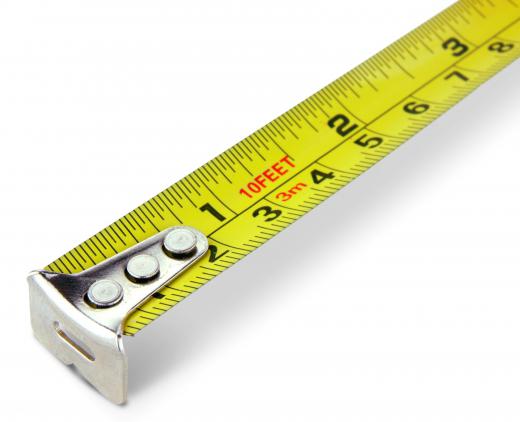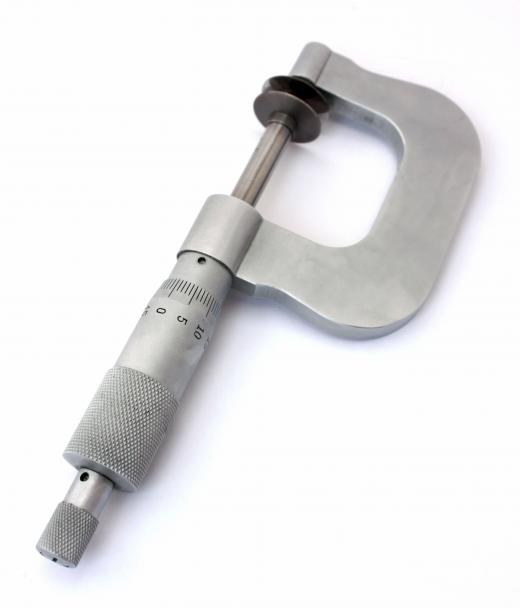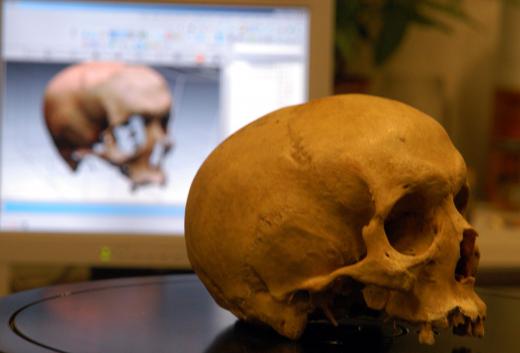What Are the Different Types of Archaeology Tools?
There are a variety of archaeology tools commonly used in the field and the lab. Excavation tools are used primarily on site and help field workers dig out buildings, burials, and other sites. Measuring tools help accomplish tasks such as taking physical measurements as well as aging artifacts or determining the depth of a buried object. Preservation tools are used to protect artifacts and remains from breakage or other environmental damage once they have been excavated. All these tools together allow archaeologists to efficiently and safely bring buried history to light.
The archaeology tools used for excavating remains, ruins, and artifacts vary significantly. Gross excavation, or the movement of large bodies of earth, may be accomplished by earth-moving equipment such as a backhoe or tractor. Shovels, spades, and other such manual implements can assist in the next stages of excavation.

Once it comes to fine excavation, which is the removal of earth and debris close to the object being uncovered, professionals often have their own preferred types of archaeology tools. In most cases, these are not even designed specifically for archaeology. Small hand trowels, such as those used for gardening, are quite popular. An excavator might prefer a paintbrush, toothbrush, or plastic teaspoon for work quite close to the artifact. Fine mesh screens are often used to sift the removed dirt so that no small artifacts such as beads or teeth are lost.

A number of archaeology tools are available for determining measurements. Sonographic detectors or more traditional measuring rods may be used to determine the depth of a buried item. Rulers and measuring tapes can help take measurements, though spreading or sliding calipers are often preferred, especially when working with human remains or other irregularly shaped objects. A variety of scales may be used to determine weight. Other archaeology tools help scientists date their finds or test for chemical composition of dyes and similar substances.

Once artifacts or human remains are exposed, they must be protected. If they are to be displayed, they must be mounted in a way that allows people to view them clearly. Archaeologists might use small paintbrushes or sprayers to apply sealant and often use a variety of applicators to apply adhesives to broken items. They might attach items such as a mandible and a skull using pins or might string the bones of a hand or a necklace of beads together using thin, nylon cord.
AS FEATURED ON:
AS FEATURED ON:














Discussion Comments
@talentryto- A small rock pick should be all that your nephew will need to begin searching for fossils. Since this tool is made specifically for breaking through rocks and picking around smaller rocks and fossils, it will be ideal for his fossil searches. As he masters the skill of removing fossils from rocks with the rock pick without breaking them, he can advance to using a larger pick for bigger projects.
@talentryto- I am a rock hound, and I have found that a chisel works great for digging around all sizes of rocks. They are easy to find at hobby shops and retail stores.
I have a nephew who wants to start searching for fossils. He knows of an area with rock formations that may have fossils inside of them. What is a good archaeology tool for a beginner that can help him get started with his new hobby?
Post your comments